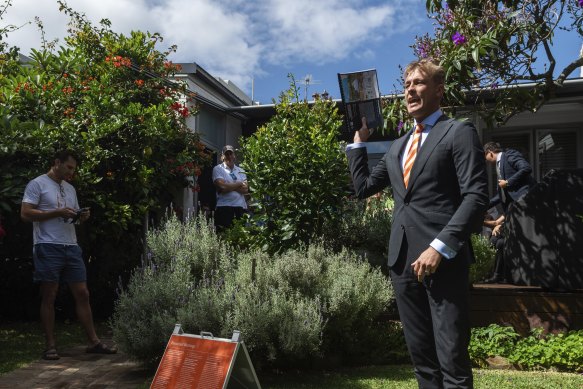The Sydney suburbs where negative gearing is going through the roof
By Sue Williams
Despite sky-high rents, the gap between what property investors receive in rent and spend in mortgage repayments is widening, particularly in Sydney’s blue-chip suburbs.
In some cases, like in Hunters Hill on the lower north shore, the shortfall is now as much as $1298 a week when paying principal and interest (P&I) on a home loan after a 20 per cent deposit.
The new CoreLogic data compares the cost of investing now to what it was at the start of the pandemic. It shows that, across the Greater Sydney area, the median rent has risen by $161 from March 2020 to January this year, while the mortgage repayments on a principal and interest loan have risen by $578 a week, leaving an investor $417 worse off.
The result is mostly due to 13 successive Reserve Bank of Australia (RBA) cash rate rises until November last year being passed on to borrowers.
Experts say the figures show that negatively geared investors are likely to incur greater losses as their costs further outstrip their income. Negative gearing rules allow investors who pay more interest on a loan than they receive in net rental income to deduct their loss from their salary income to reduce their taxable income.
The chasm between rental income and the cost of mortgages is much greater in the more expensive areas of Sydney. In Ku-ring-gai on the upper north shore, rents have risen by $196 a week, but P&I repayments have increased by $1,451, creating a gap of $1256.
In Woollahra, in the eastern suburbs, rents are up $268, but P&I payments are up $1449, trailing by $1181. Mosman’s $150 increase in median rents contrasts with a jump of $1219 in the P&I, with a gap of $1069.
The figures assume a 30-year loan with a 20 per cent deposit, factoring in changes in the mortgage rate.
Tim Lawless, executive research director of Asia-Pacific of CoreLogic, says the figures come as a shock to many people, particularly when investors are highly leveraged. If they’re closer to debt-free, they wouldn’t be so badly impacted.

Mortgage costs have risen faster than rents.Credit: Rhett Wyman
“But if you have a $500,000 mortgage on a variable rate, then your repayments will have gone up by just over $1000 a month since April 2022 before the first of the rate rises,” he said.
“If you’re in a really expensive market, with a 20 per cent deposit, you may be paying $1,500 a week more, although if you’re buying there you might have more equity so, theoretically, you won’t be as highly leveraged. But if you are buying in those markets, repayments are extraordinarily high.
“Then again, property values have gone up substantially too, an average of $218,000 more, or 24 per cent, since the start of the pandemic.”
Even in some more affordable areas of Sydney, investors are out of pocket. In Canterbury-Bankstown, for example, rents have gone up by $177, while repayments rose $581. In Parramatta, rents have gone up $150, and repayments have gone up by $394.
“Rents, even though they’ve gone up substantially, now only cover about half of the cost of holding an investment property in many areas,” said PRD Real Estate Chief Economist Dr Diaswati Mardiasmo. “We’ve seen some movement in terms of investors saying it’s no longer financially viable and selling their properties or deciding not to buy.
“Negative gearing has always been an ingrained part of the market because if too many investors get out, then there’ll be fewer homes to rent, especially in the blue-chip areas, and those renters will have to move down to the next band and compete with those already there, to push up rents even higher.”
Many investors are pinning their hopes on their financial predicament, easing when interest rates are brought down, but when that might happen is still far from certain.
“We’re increasingly pessimistic about the prospect of a cut this year,” said Housing Industry Association chief economist Tim Reardon. “Unemployment still remains extraordinarily low, and even if there’s a modest cut at the end of the year, there won’t be a tangible impact on investors.
“Rents have gone up, but often by small increments for good tenants because investors want to keep them, and there are constraints on the capacity of tenants to pay. I think these figures show not so much that some investors will be moving from being positively geared to negative, but that the loss that negatively geared investors will be greater.”
Property management consultant Kasey McDonald, director of the Property Management Training Academy, acknowledges the public sympathy for tenants but adds many investors are doing it tough.
”Investors looking at this gap should be speaking to their broker and lender and property manager about what sort of things they could do to support additional income or reducing the expenses of the property,” she said.
“But it’s very important that investors remain in the market, but they do need to understand how that property might be performing.”